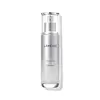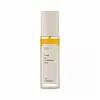What's inside
What's inside
 Key Ingredients
Key Ingredients

 Benefits
Benefits

 Concerns
Concerns

 Ingredients Side-by-side
Ingredients Side-by-side

Water
Skin ConditioningButylene Glycol
HumectantGlycerin
HumectantSqualane
EmollientCaprylic/Capric Triglyceride
MaskingPentaerythrityl Tetraethylhexanoate
EmollientDiisostearyl Malate
EmollientPCA Dimethicone
Skin ConditioningPEG-60 Glyceryl Isostearate
Dimethicone
EmollientPhytosteryl/Behenyl/Octyldodecyl Lauroyl Glutamate
Skin ConditioningPropanediol
SolventC14-22 Alcohols
Emulsion StabilisingHydroxyethyl Acrylate/Sodium Acryloyldimethyl Taurate Copolymer
Emulsion StabilisingArachidyl Alcohol
EmollientStearic Acid
CleansingGlyceryl Stearate
EmollientButyrospermum Parkii Butter
Skin ConditioningPalmitic Acid
EmollientBehenyl Alcohol
EmollientC12-20 Alkyl Glucoside
EmulsifyingDimethicone/Vinyl Dimethicone Crosspolymer
Skin ConditioningCarbomer
Emulsion StabilisingArachidyl Glucoside
EmulsifyingGlyceryl Caprylate
EmollientTromethamine
BufferingEthylhexylglycerin
Skin ConditioningDisodium EDTA
Parfum
MaskingAdenosine
Skin ConditioningBeta-Glucan
Skin ConditioningSorbitan Isostearate
EmulsifyingPolysorbate 60
EmulsifyingPentylene Glycol
Skin ConditioningHibiscus Abelmoschus Extract
MaskingHyaluronic Acid
HumectantGlycine Max Polypeptide
Skin ConditioningMyristic Acid
CleansingLauric Acid
CleansingCeratonia Siliqua Fruit Extract
MaskingXanthan Gum
EmulsifyingTillandsia Usneoides Extract
Skin ConditioningTocopherol
AntioxidantWater, Butylene Glycol, Glycerin, Squalane, Caprylic/Capric Triglyceride, Pentaerythrityl Tetraethylhexanoate, Diisostearyl Malate, PCA Dimethicone, PEG-60 Glyceryl Isostearate, Dimethicone, Phytosteryl/Behenyl/Octyldodecyl Lauroyl Glutamate, Propanediol, C14-22 Alcohols, Hydroxyethyl Acrylate/Sodium Acryloyldimethyl Taurate Copolymer, Arachidyl Alcohol, Stearic Acid, Glyceryl Stearate, Butyrospermum Parkii Butter, Palmitic Acid, Behenyl Alcohol, C12-20 Alkyl Glucoside, Dimethicone/Vinyl Dimethicone Crosspolymer, Carbomer, Arachidyl Glucoside, Glyceryl Caprylate, Tromethamine, Ethylhexylglycerin, Disodium EDTA, Parfum, Adenosine, Beta-Glucan, Sorbitan Isostearate, Polysorbate 60, Pentylene Glycol, Hibiscus Abelmoschus Extract, Hyaluronic Acid, Glycine Max Polypeptide, Myristic Acid, Lauric Acid, Ceratonia Siliqua Fruit Extract, Xanthan Gum, Tillandsia Usneoides Extract, Tocopherol
Citrus Junos Fruit Water
MaskingWater
Skin ConditioningMacadamia Integrifolia Seed Oil
Skin ConditioningPropanediol
SolventPentylene Glycol
Skin ConditioningAloe Barbadensis Leaf Juice
Skin ConditioningSimmondsia Chinensis Seed Oil
EmollientGlycerin
HumectantCentella Asiatica Extract
CleansingTocopherol
AntioxidantDunaliella Salina Extract
Skin ConditioningHelianthus Annuus Seed Oil
EmollientPelargonium Graveolens Flower Oil
MaskingCitrus Aurantium Dulcis Peel Oil
MaskingAmyris Balsamifera Bark Oil
MaskingCitronellol
PerfumingGeraniol
PerfumingLimonene
PerfumingLinalool
PerfumingCitrus Junos Fruit Water, Water, Macadamia Integrifolia Seed Oil, Propanediol, Pentylene Glycol, Aloe Barbadensis Leaf Juice, Simmondsia Chinensis Seed Oil, Glycerin, Centella Asiatica Extract, Tocopherol, Dunaliella Salina Extract, Helianthus Annuus Seed Oil, Pelargonium Graveolens Flower Oil, Citrus Aurantium Dulcis Peel Oil, Amyris Balsamifera Bark Oil, Citronellol, Geraniol, Limonene, Linalool
 Reviews
Reviews

Ingredients Explained
These ingredients are found in both products.
Ingredients higher up in an ingredient list are typically present in a larger amount.
Glycerin is already naturally found in your skin. It helps moisturize and protect your skin.
A study from 2016 found glycerin to be more effective as a humectant than AHAs and hyaluronic acid.
As a humectant, it helps the skin stay hydrated by pulling moisture to your skin. The low molecular weight of glycerin allows it to pull moisture into the deeper layers of your skin.
Hydrated skin improves your skin barrier; Your skin barrier helps protect against irritants and bacteria.
Glycerin has also been found to have antimicrobial and antiviral properties. Due to these properties, glycerin is often used in wound and burn treatments.
In cosmetics, glycerin is usually derived from plants such as soybean or palm. However, it can also be sourced from animals, such as tallow or animal fat.
This ingredient is organic, colorless, odorless, and non-toxic.
Glycerin is the name for this ingredient in American English. British English uses Glycerol/Glycerine.
Learn more about GlycerinPentylene glycol is typically used within a product to thicken it. It also adds a smooth, soft, and moisturizing feel to the product. It is naturally found in plants such as sugar beets.
The hydrophilic trait of Pentylene Glycol makes it a humectant. As a humectant, Pentylene Glycol helps draw moisture from the air to your skin. This can help keep your skin hydrated.
This property also makes Pentylene Glycol a great texture enhancer. It can also help thicken or stabilize a product.
Pentylene Glycol also acts as a mild preservative and helps to keep a product microbe-free.
Some people may experience mild eye and skin irritation from Pentylene Glycol. We always recommend speaking with a professional about using this ingredient in your routine.
Pentylene Glycol has a low molecular weight and is part of the 1,2-glycol family.
Learn more about Pentylene GlycolPropanediol is an all-star ingredient. It softens, hydrates, and smooths the skin.
It’s often used to:
Propanediol is not likely to cause sensitivity and considered safe to use. It is derived from corn or petroleum with a clear color and no scent.
Learn more about PropanediolTocopherol (also known as Vitamin E) is a common antioxidant used to help protect the skin from free-radicals and strengthen the skin barrier. It's also fat soluble - this means our skin is great at absorbing it.
Vitamin E also helps keep your natural skin lipids healthy. Your lipid skin barrier naturally consists of lipids, ceramides, and fatty acids. Vitamin E offers extra protection for your skin’s lipid barrier, keeping your skin healthy and nourished.
Another benefit is a bit of UV protection. Vitamin E helps reduce the damage caused by UVB rays. (It should not replace your sunscreen). Combining it with Vitamin C can decrease sunburned cells and hyperpigmentation after UV exposure.
You might have noticed Vitamin E + C often paired together. This is because it is great at stabilizing Vitamin C. Using the two together helps increase the effectiveness of both ingredients.
There are often claims that Vitamin E can reduce/prevent scarring, but these claims haven't been confirmed by scientific research.
Learn more about TocopherolWater. It's the most common cosmetic ingredient of all. You'll usually see it at the top of ingredient lists, meaning that it makes up the largest part of the product.
So why is it so popular? Water most often acts as a solvent - this means that it helps dissolve other ingredients into the formulation.
You'll also recognize water as that liquid we all need to stay alive. If you see this, drink a glass of water. Stay hydrated!
Learn more about Water